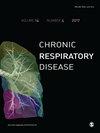The effect of continuous positive airway pressure and mandibular advancement device on sleep bruxism intensity in obstructive sleep apnea patients
IF 3.5
3区 医学
Q2 RESPIRATORY SYSTEM
引用次数: 7
Abstract
We aimed to evaluate and compare the effects of continuous positive airway pressure (CPAP) and mandibular advancement device (MAD) in reducing the intensity of sleep bruxism (SB) in patients with obstructive sleep apnea (OSA). Forty-eight adults with OSA were subjected to single-night full polysomnography (PSG) in the Sleep Laboratory of the Wroclaw Medical University. The respiratory events and bruxism episodes were scored according to the standards of the American Academy of Sleep Medicine. The patients were assigned to the CPAP treatment or the MAD treatment in accordance to apnea–hypopnea index (AHI). The second PSG examination was conducted during the MAD or CPAP treatment to assess the effect of treatment on bruxism episode index (BEI) and AHI. The mean AHI and mean BEI in the study material were estimated to be 30.05 ± 15.39 and 5.10 ± 5.31, respectively. The bruxism parameters were significantly decreased in both the CPAP and MAD groups. Compared to the MAD, the CPAP treatment was more effective in reducing AHI; however, there was no significant difference in effectiveness of CPAP and MAD treatment in BEI reduction. Both CPAP and MAD treatments were effective against SB coexisting with OSA. Due to the application of these treatment options, the risk of OSA should be estimated in patients with SB.持续气道正压和下颌前移器对阻塞性睡眠呼吸暂停患者睡眠磨牙症强度的影响
我们旨在评估和比较持续气道正压通气(CPAP)和下颌前移装置(MAD)在降低阻塞性睡眠呼吸暂停(OSA)患者睡眠磨牙症(SB)强度方面的效果。48名患有OSA的成年人在弗罗茨瓦夫医科大学睡眠实验室接受了单晚全多导睡眠图(PSG)检查。呼吸系统事件和磨牙症发作根据美国睡眠医学学会的标准进行评分。根据呼吸暂停-低通气指数(AHI)将患者分为CPAP治疗或MAD治疗。在MAD或CPAP治疗期间进行第二次PSG检查,以评估治疗对磨牙症发作指数(BEI)和AHI的影响。研究材料中的平均AHI和平均BEI估计分别为30.05±15.39和5.10±5.31。CPAP组和MAD组的磨牙症参数均显著降低。与MAD相比,CPAP治疗在降低AHI方面更有效;CPAP和MAD治疗BEI的疗效无显著差异。CPAP和MAD治疗对SB合并OSA均有效。由于这些治疗方案的应用,应估计SB患者患OSA的风险。
本文章由计算机程序翻译,如有差异,请以英文原文为准。
求助全文
约1分钟内获得全文
求助全文
来源期刊

Chronic Respiratory Disease
RESPIRATORY SYSTEM-
CiteScore
5.90
自引率
7.30%
发文量
47
审稿时长
11 weeks
期刊介绍:
Chronic Respiratory Disease is a peer-reviewed, open access, scholarly journal, created in response to the rising incidence of chronic respiratory diseases worldwide. It publishes high quality research papers and original articles that have immediate relevance to clinical practice and its multi-disciplinary perspective reflects the nature of modern treatment. The journal provides a high quality, multi-disciplinary focus for the publication of original papers, reviews and commentary in the broad area of chronic respiratory disease, particularly its treatment and management.
 求助内容:
求助内容: 应助结果提醒方式:
应助结果提醒方式:


